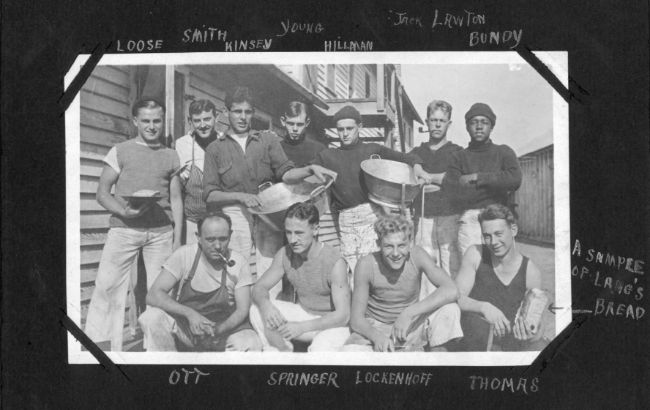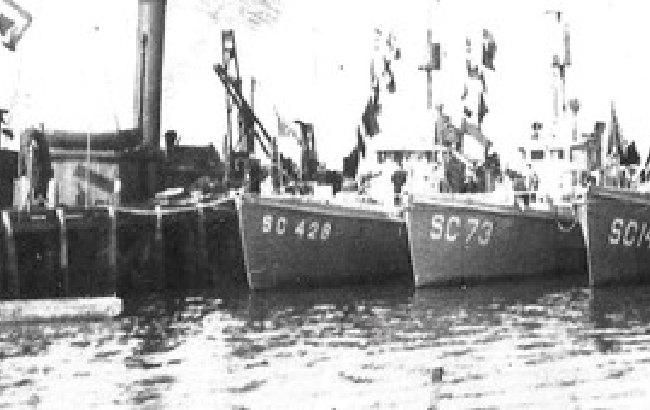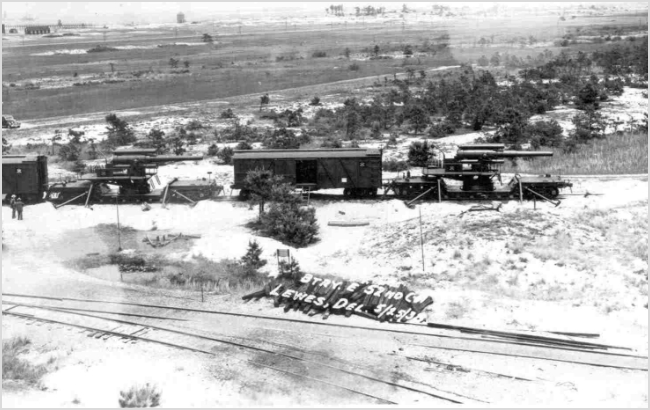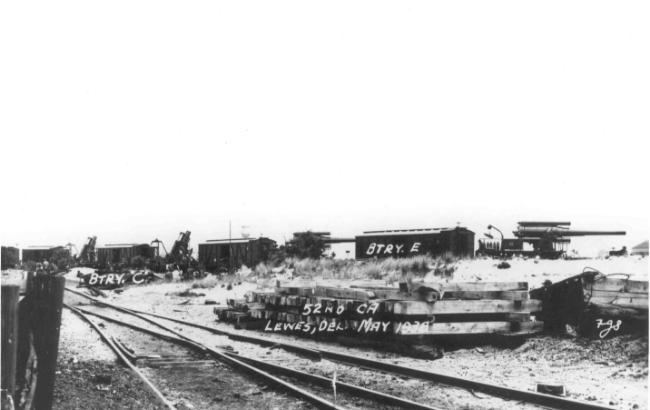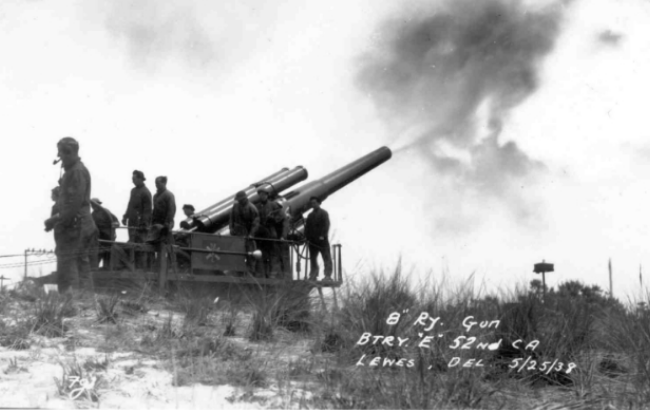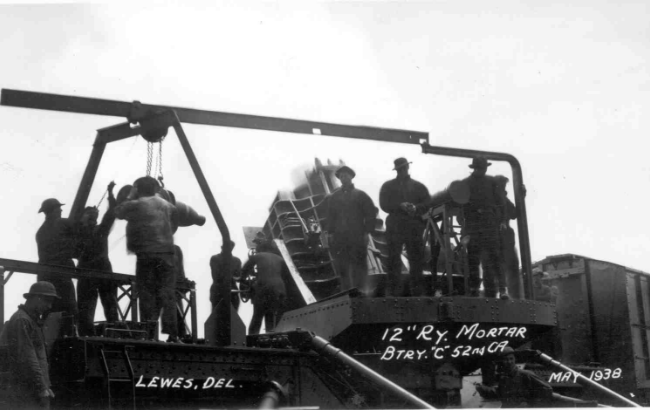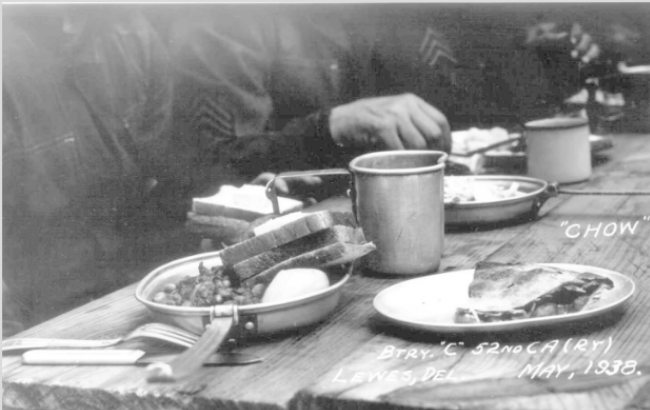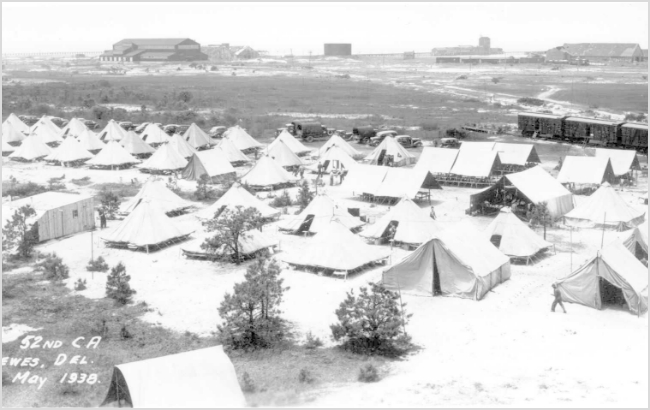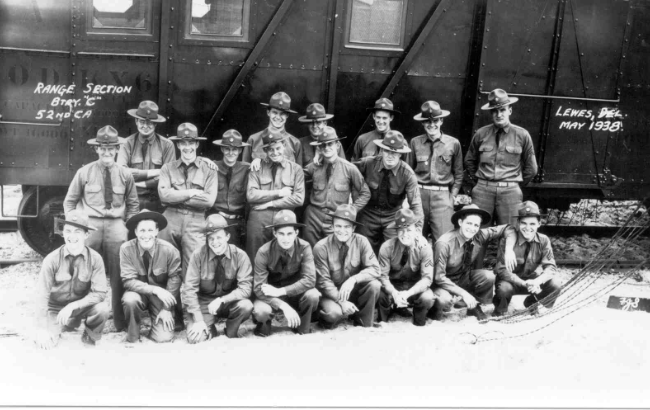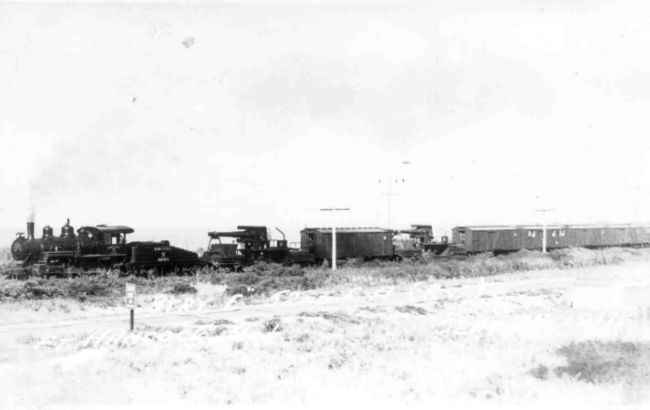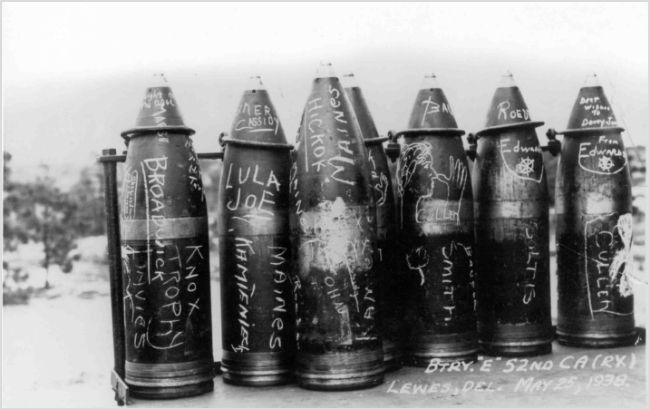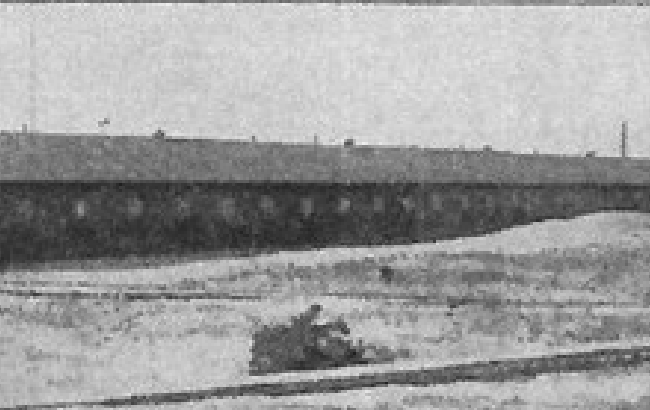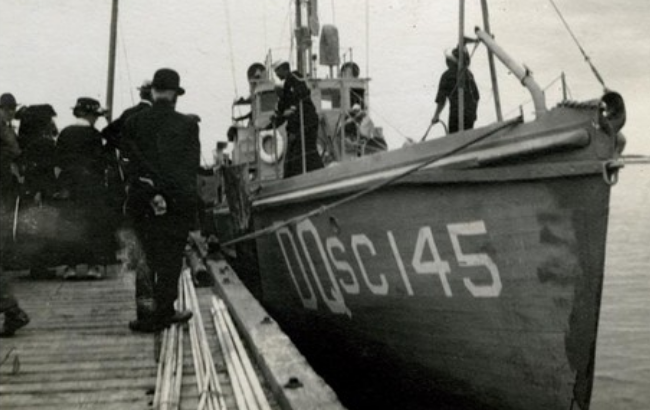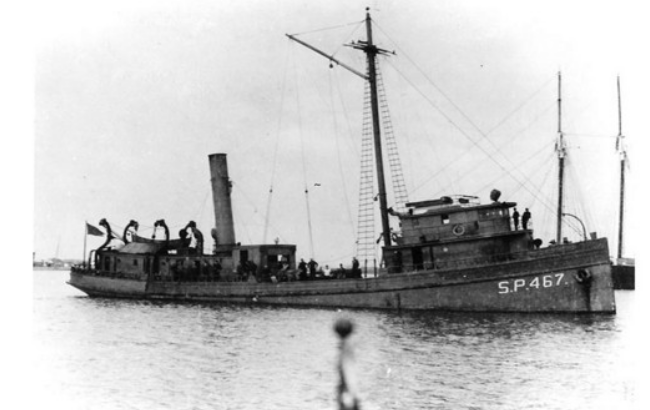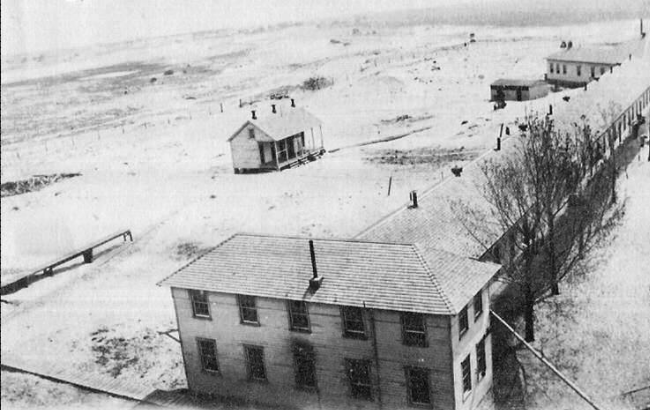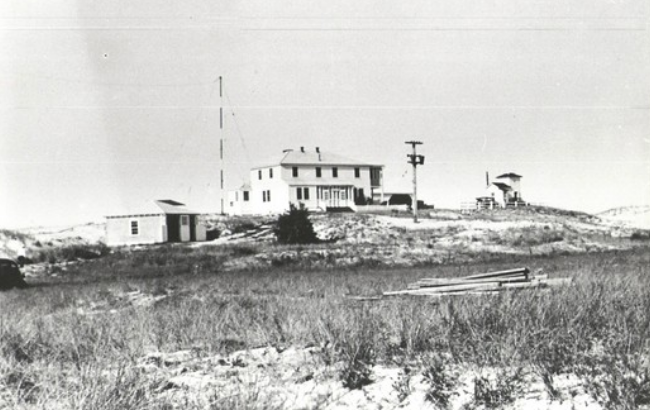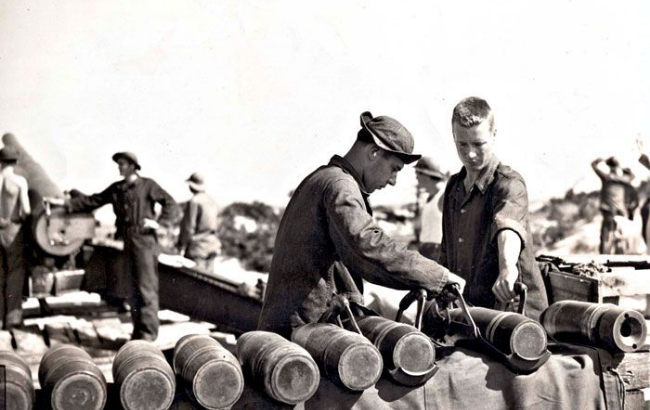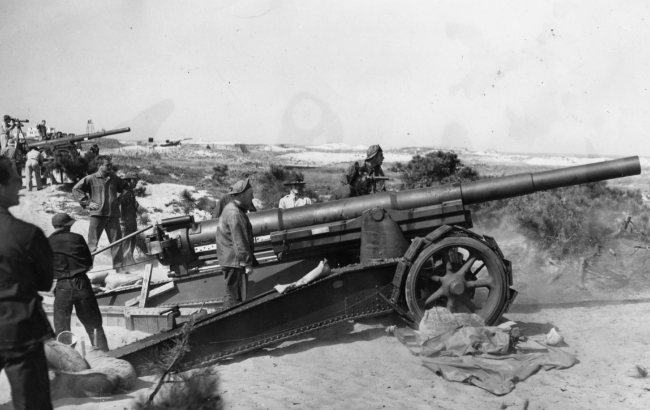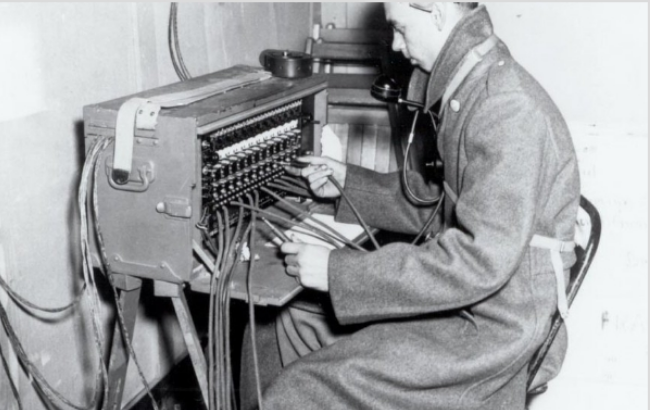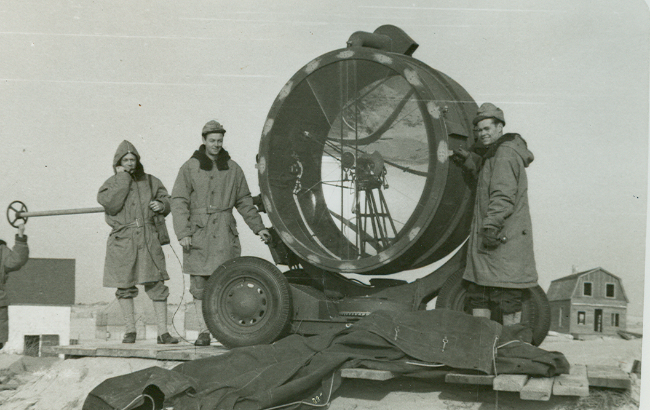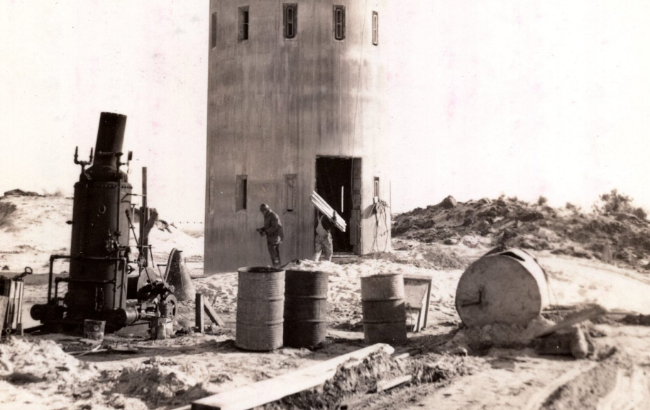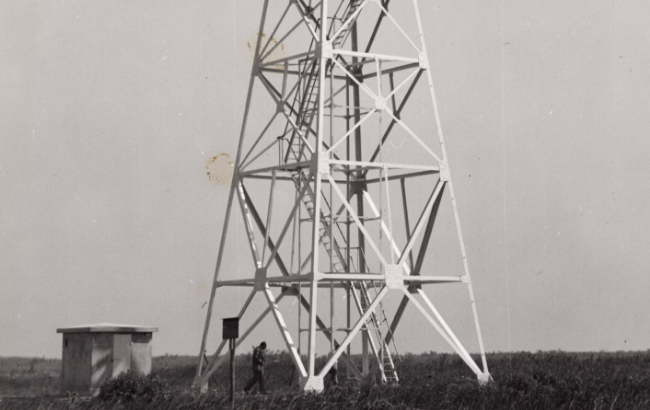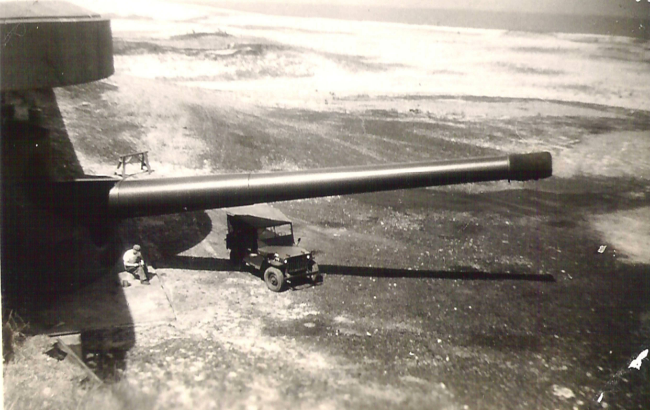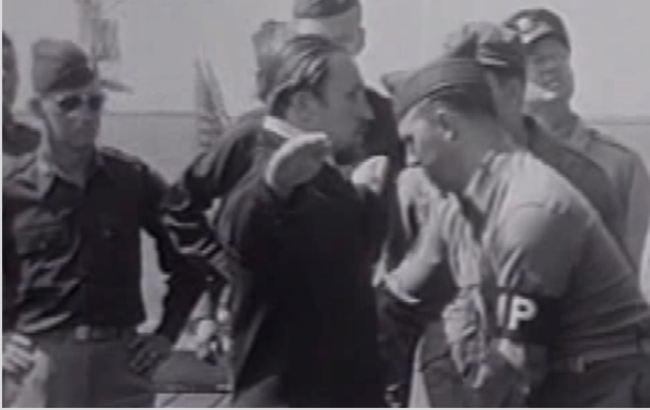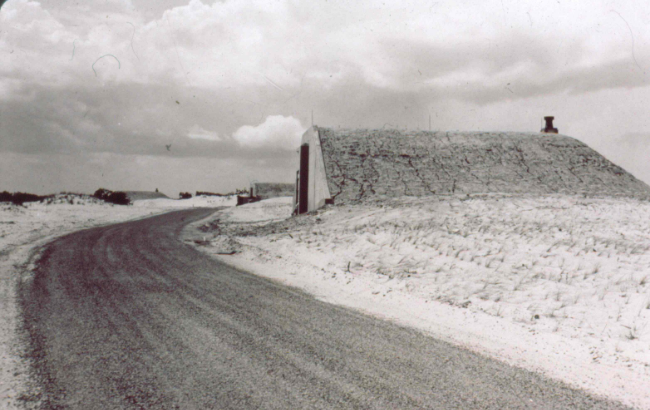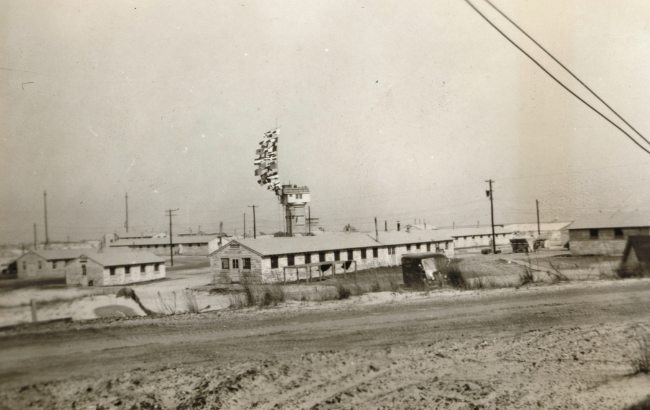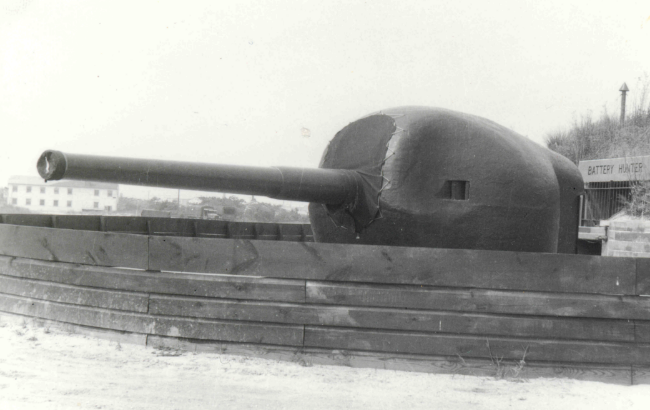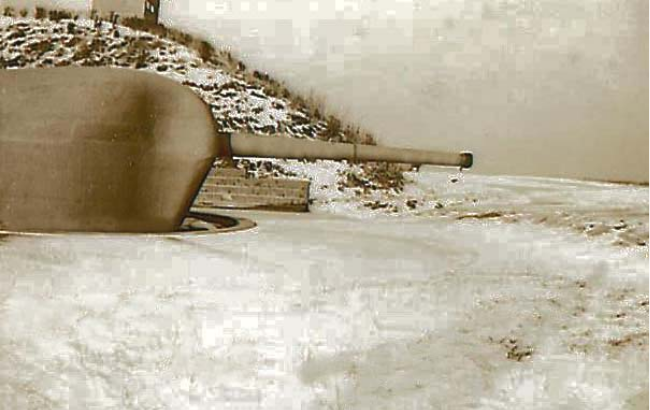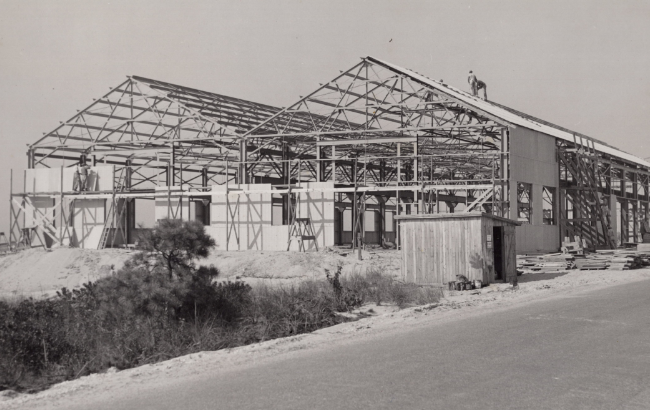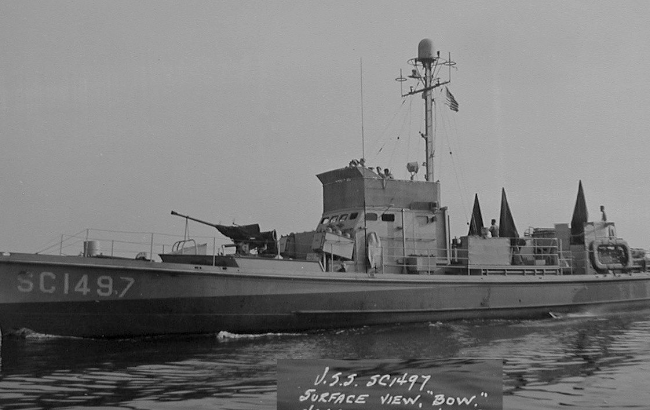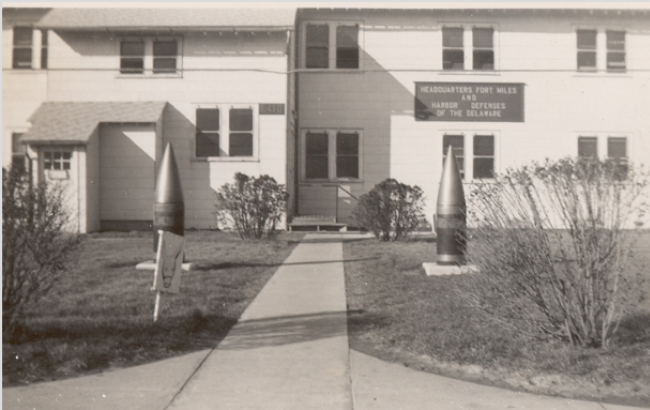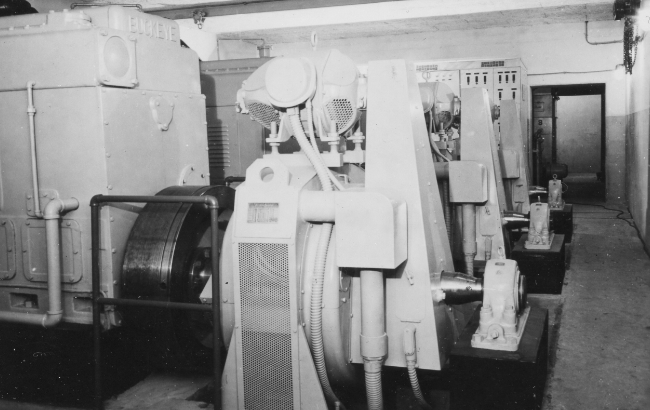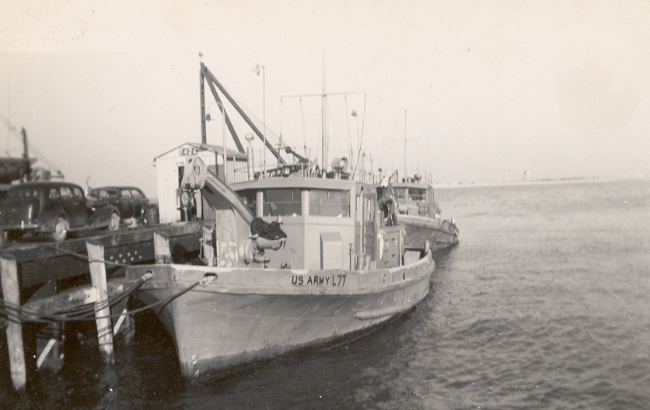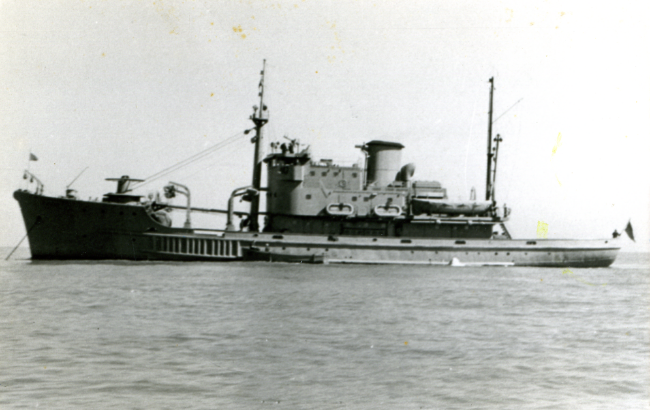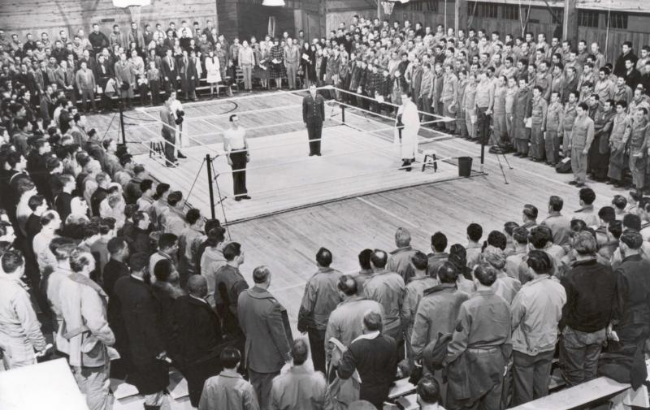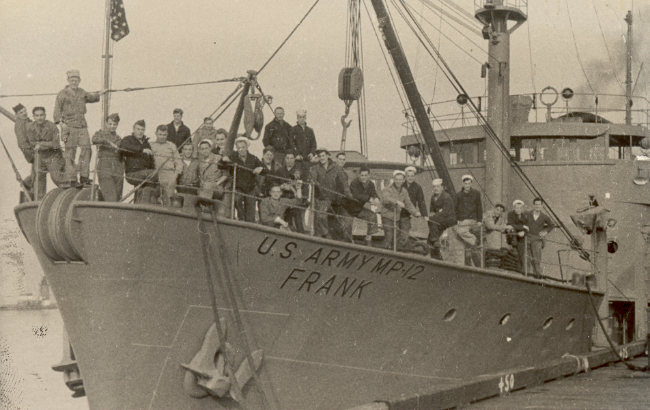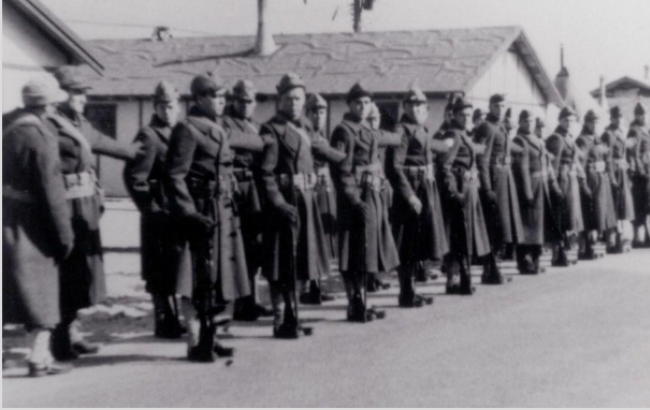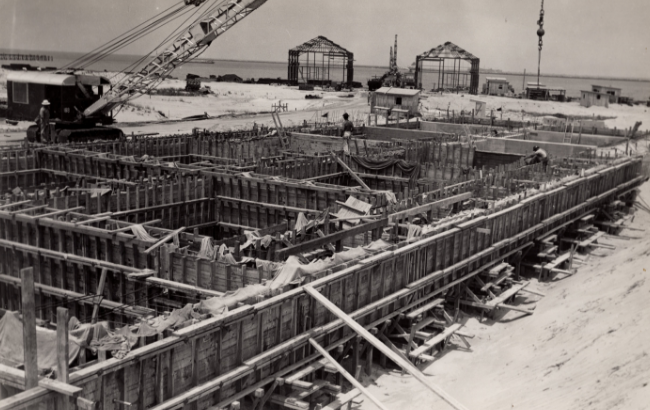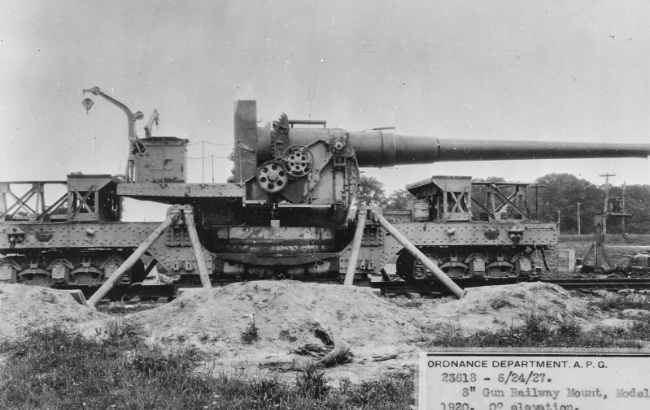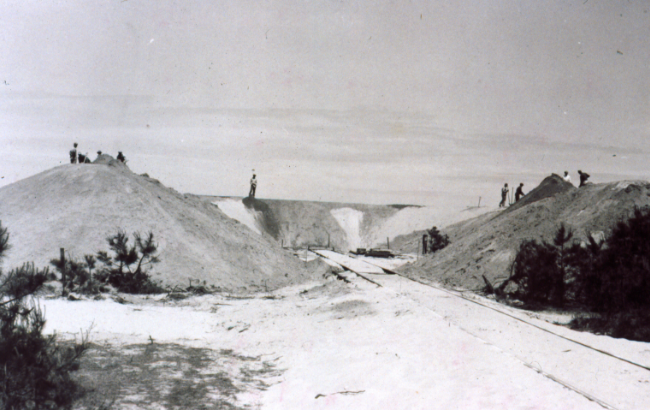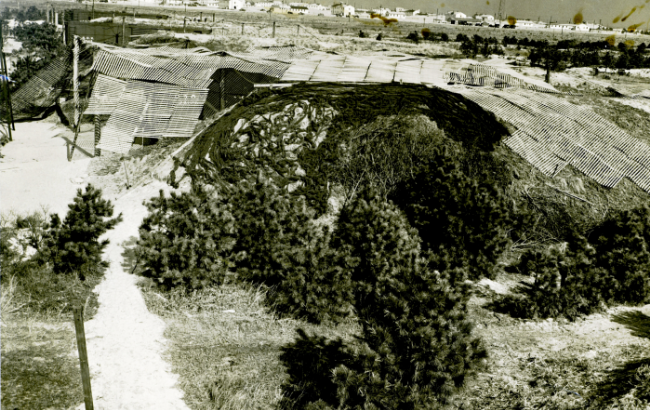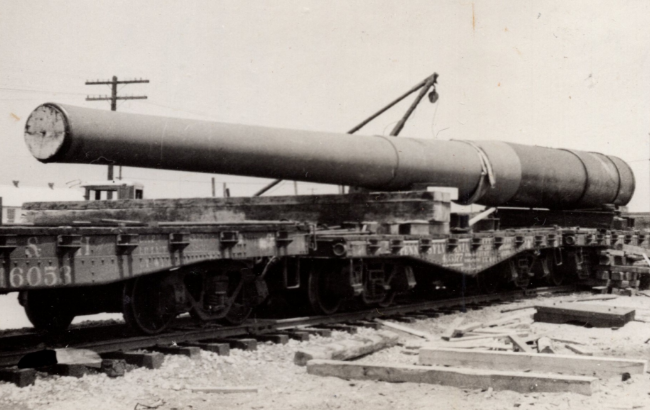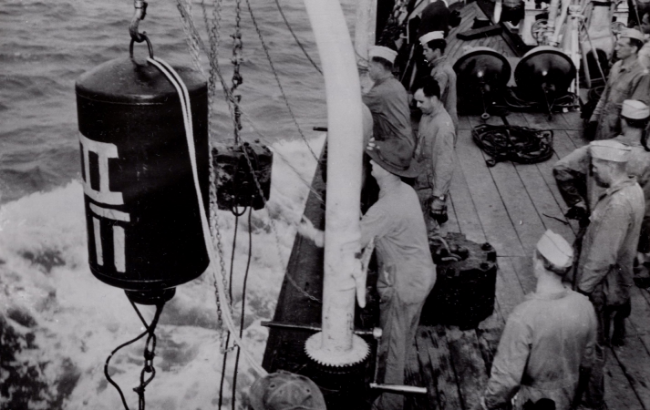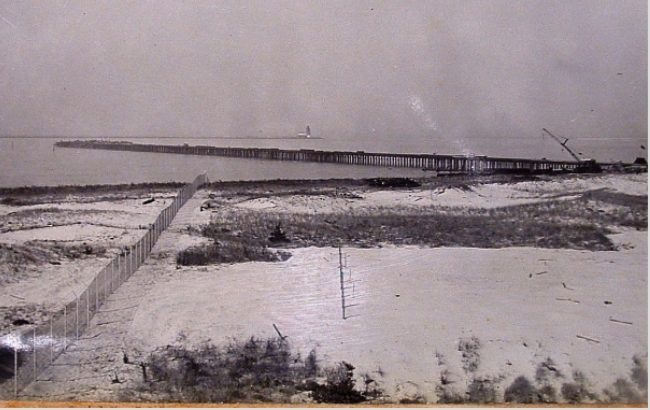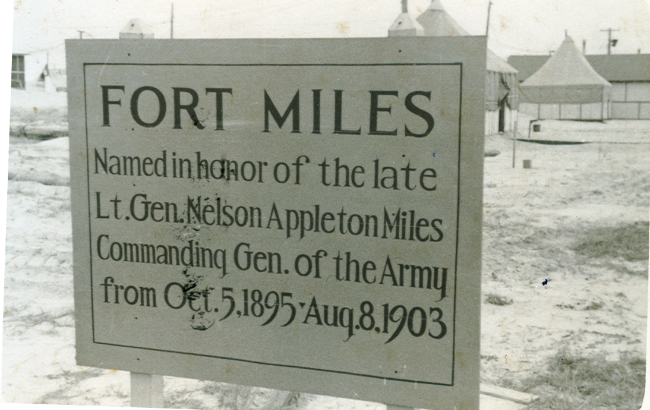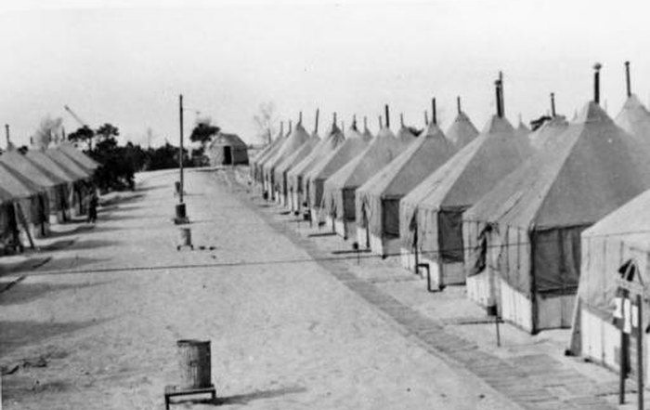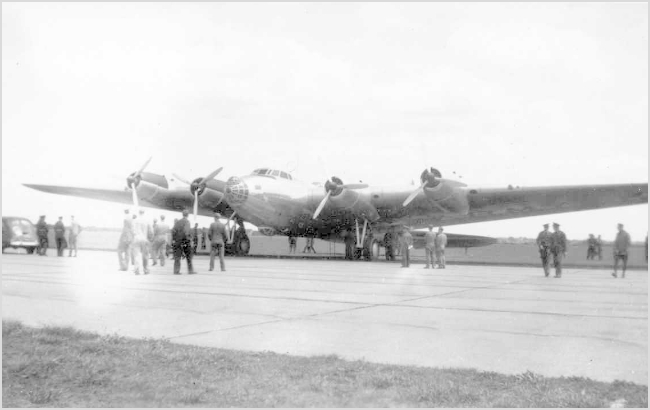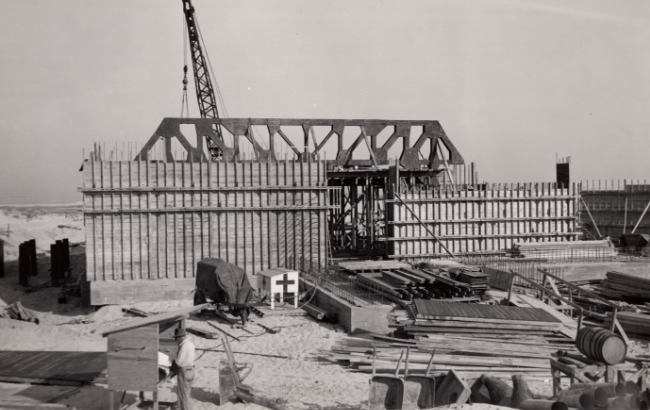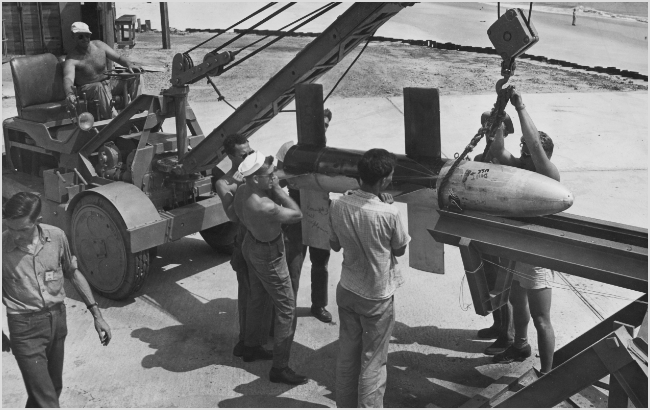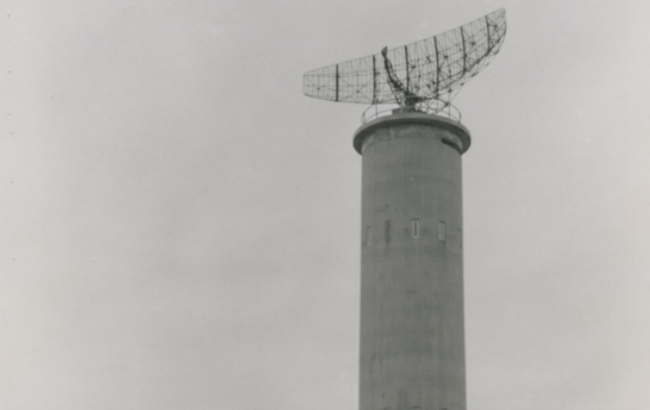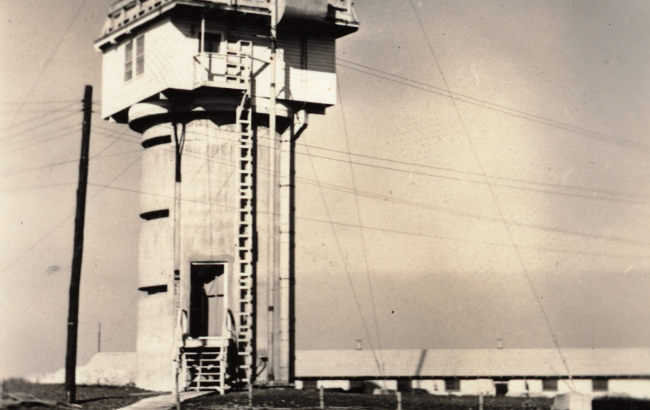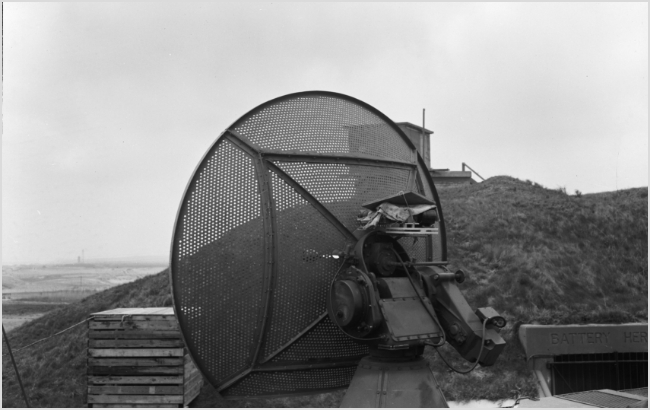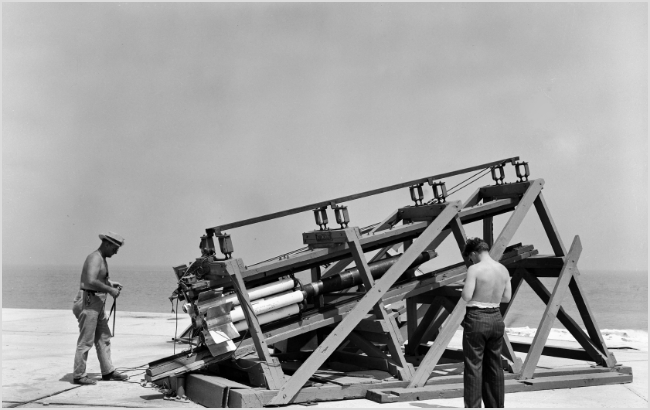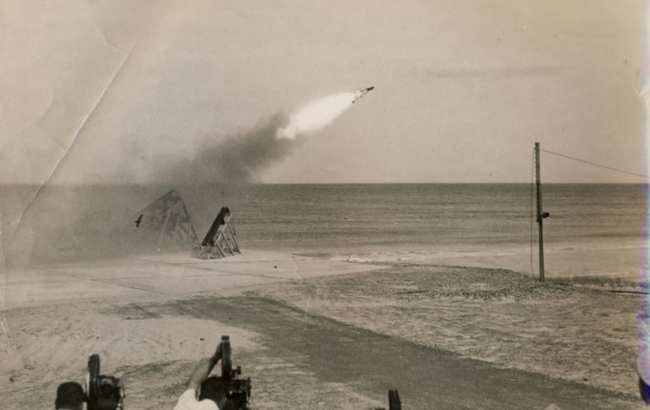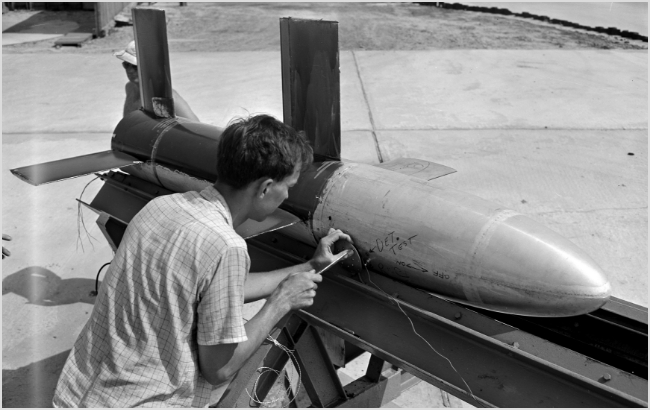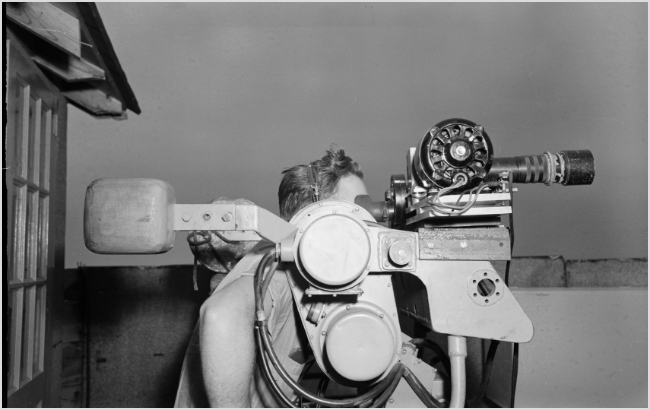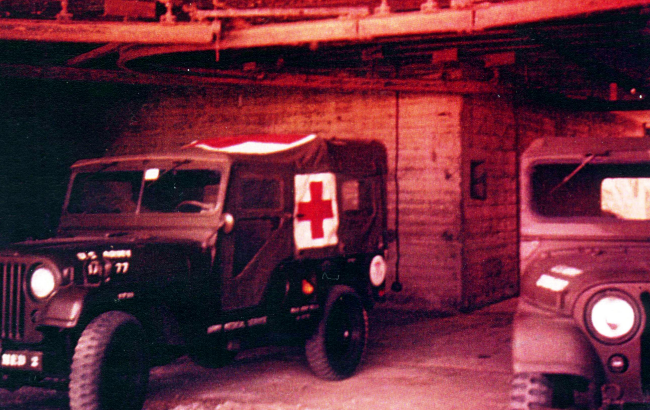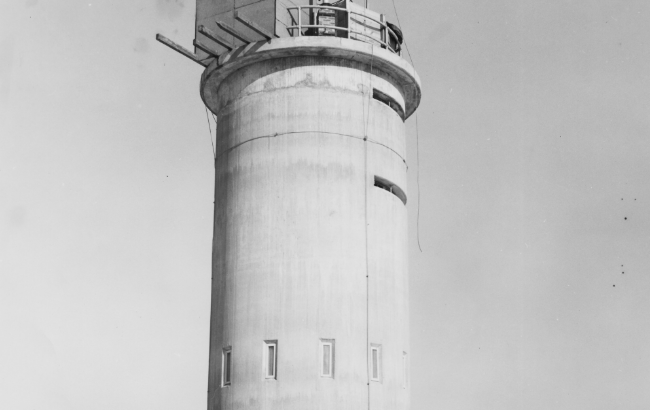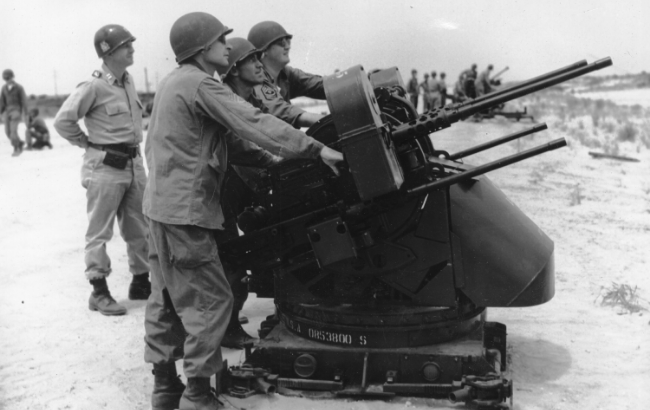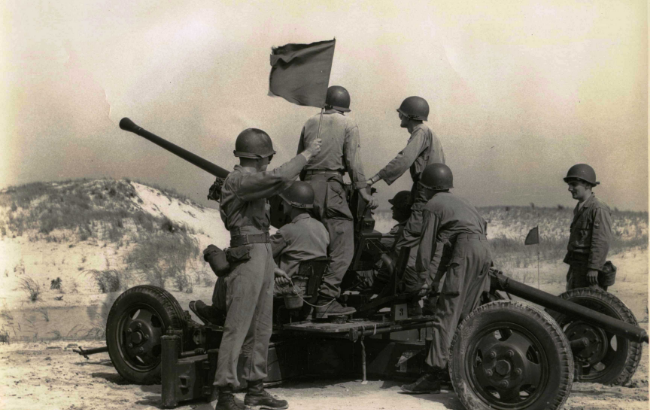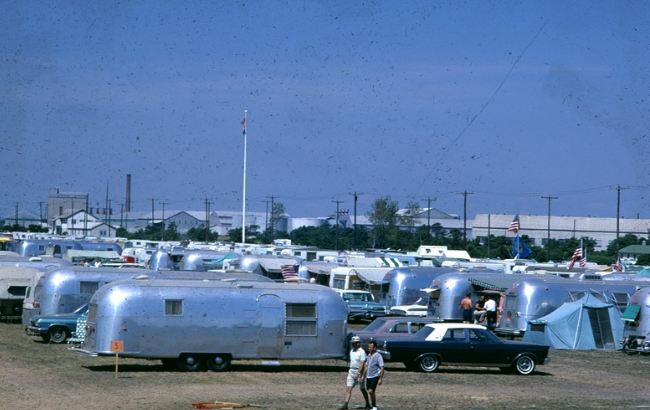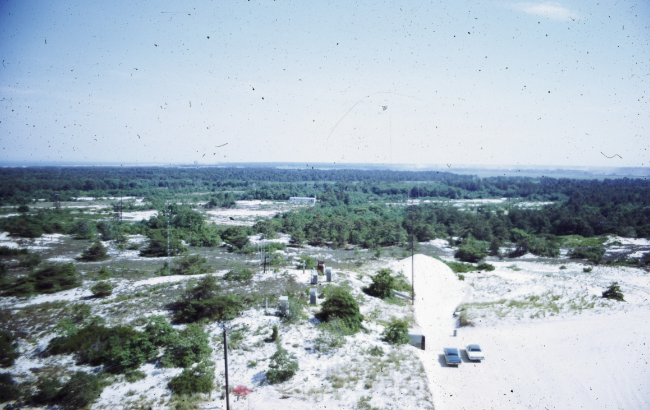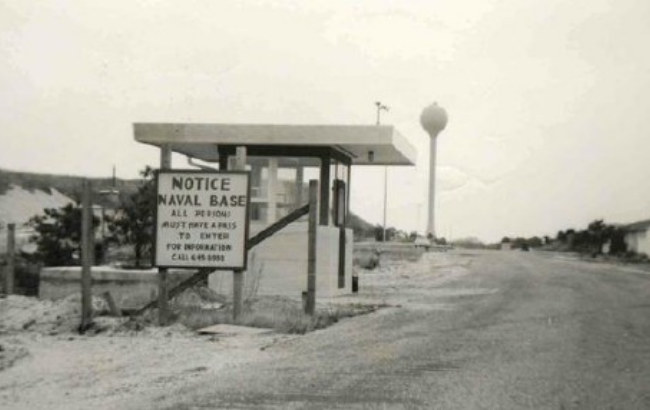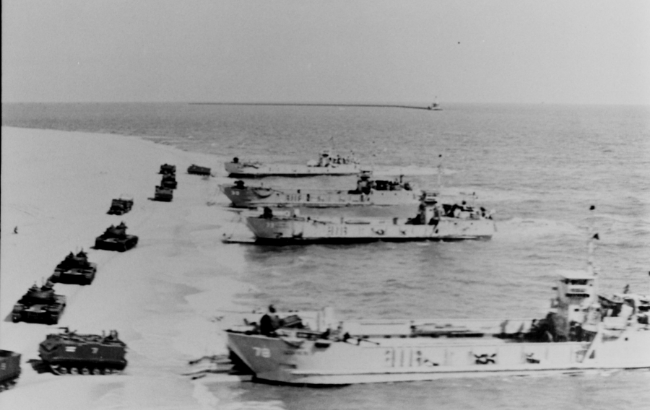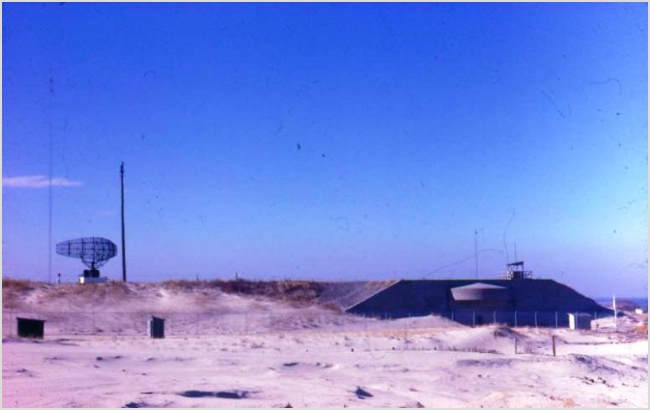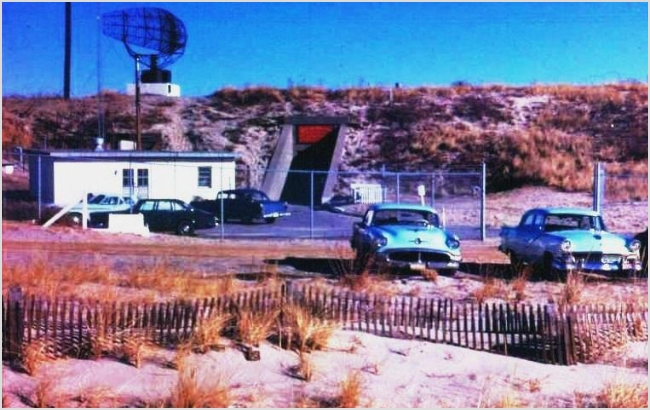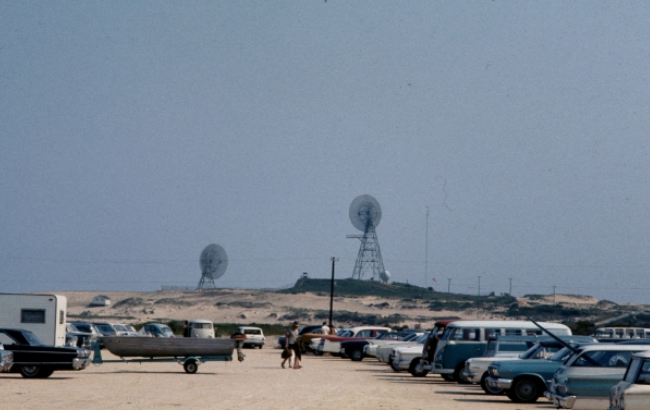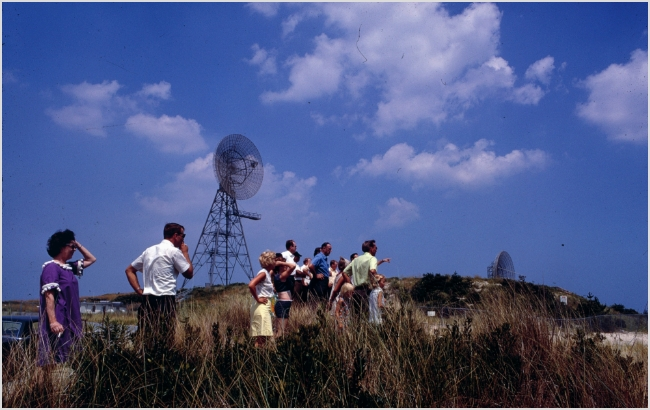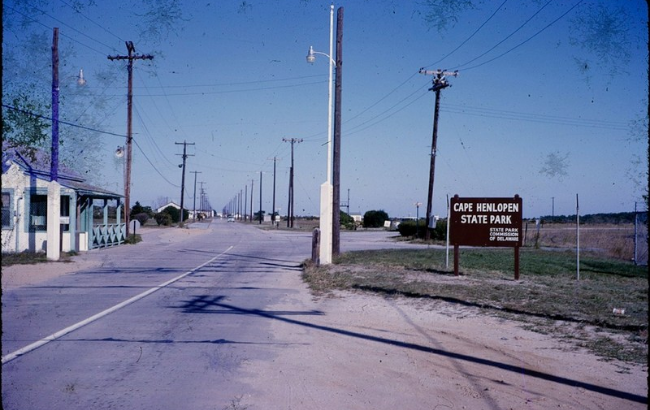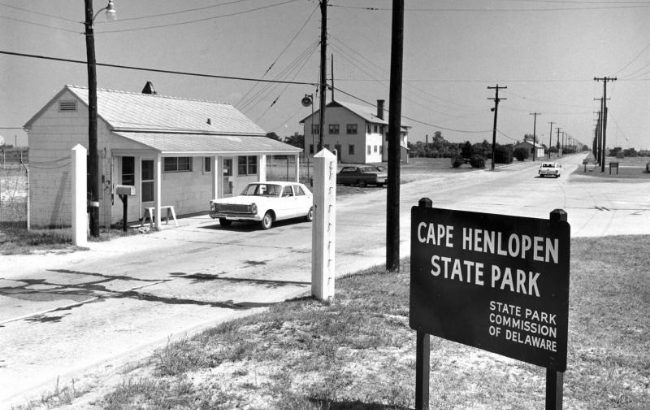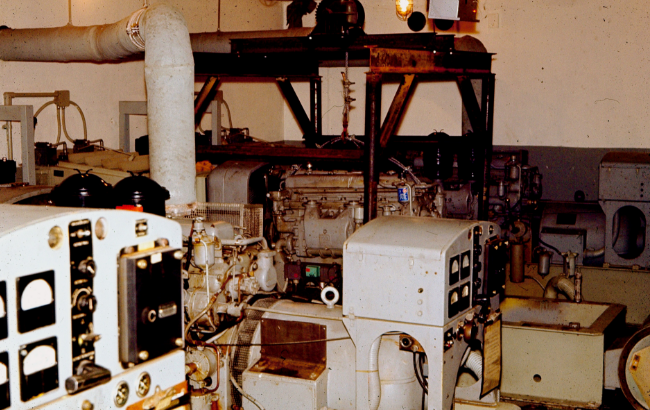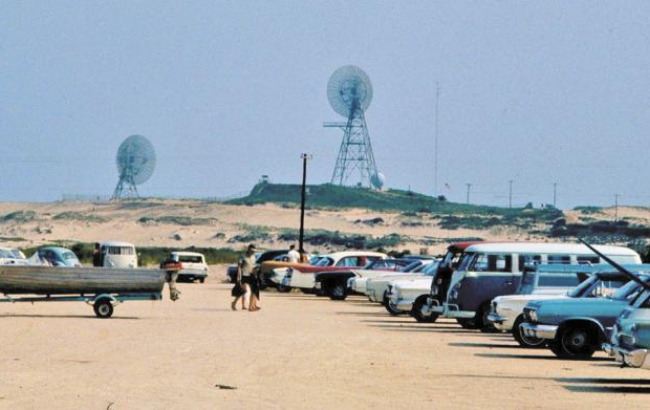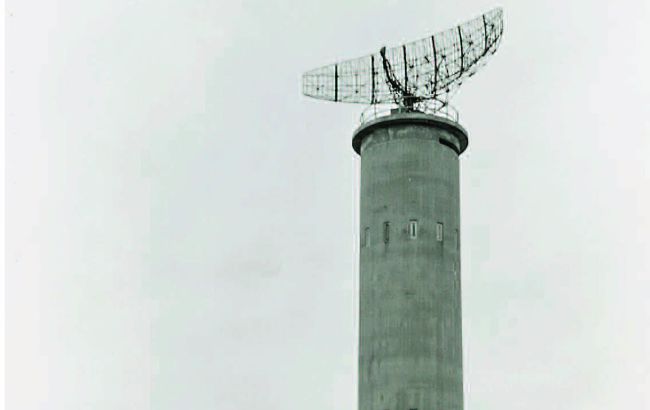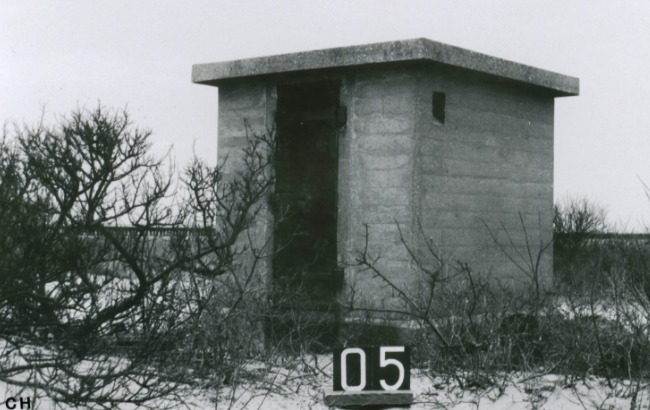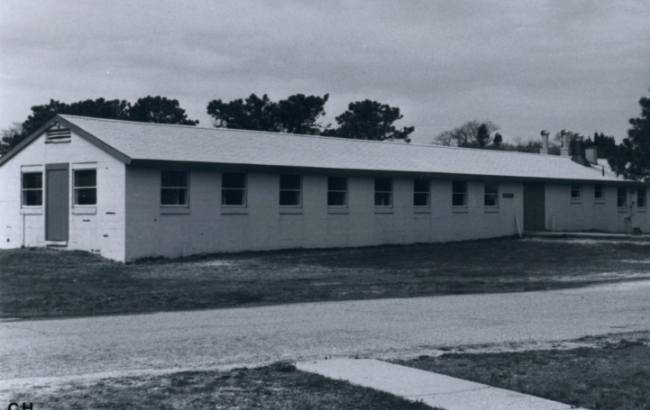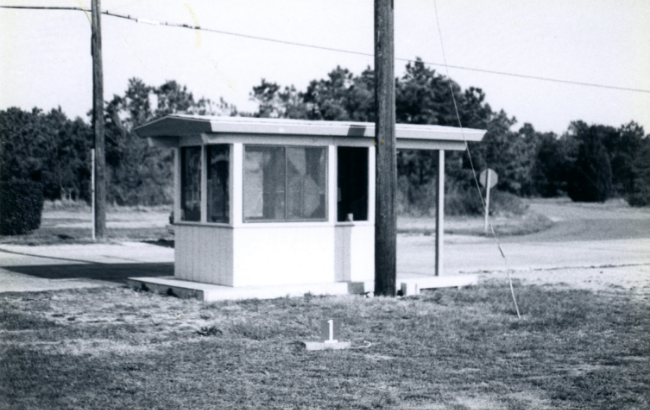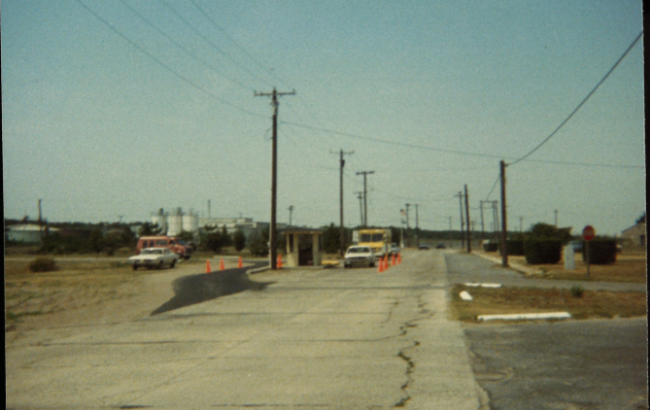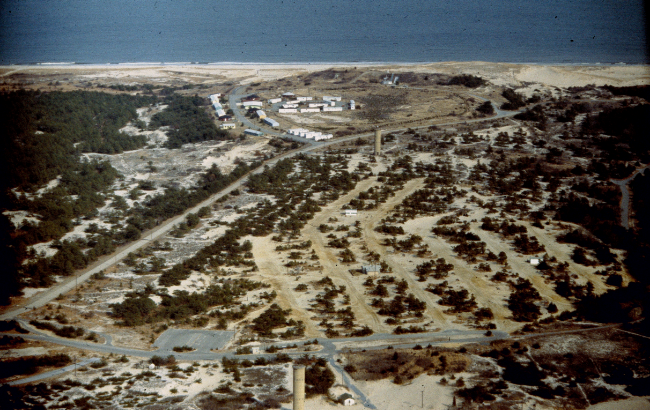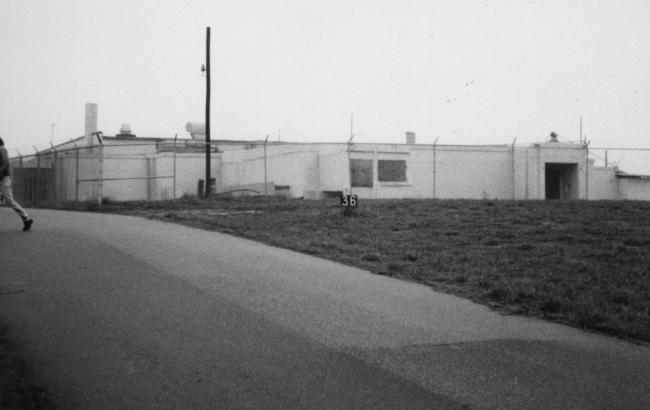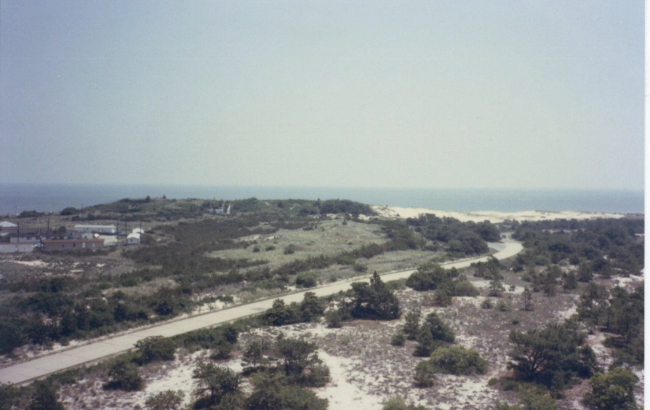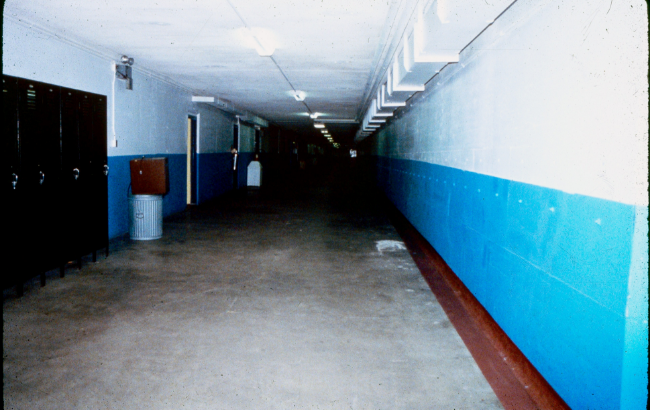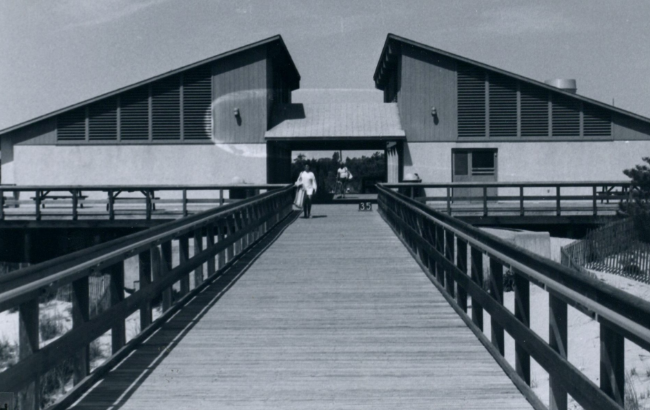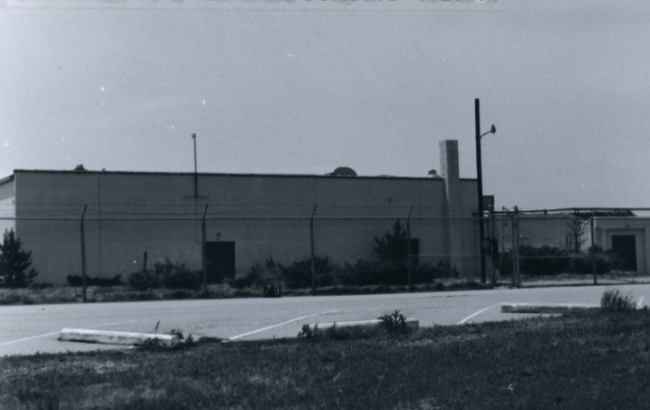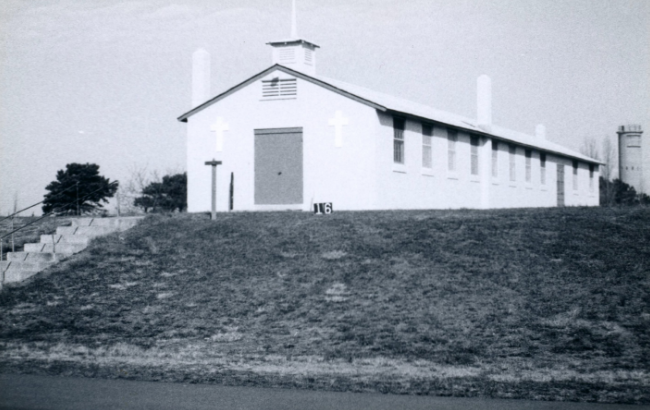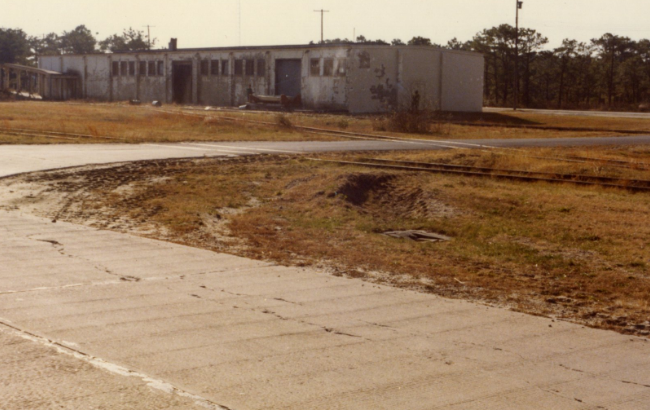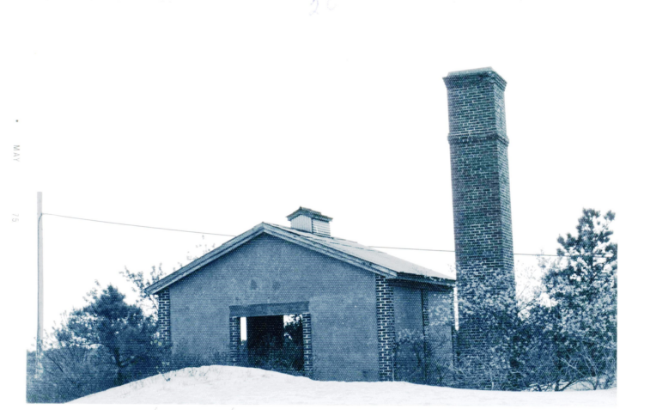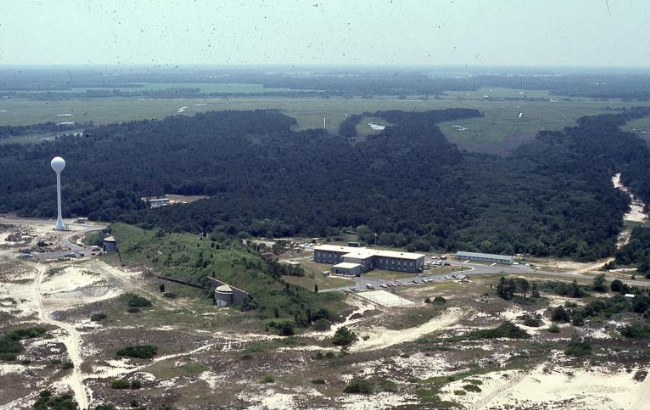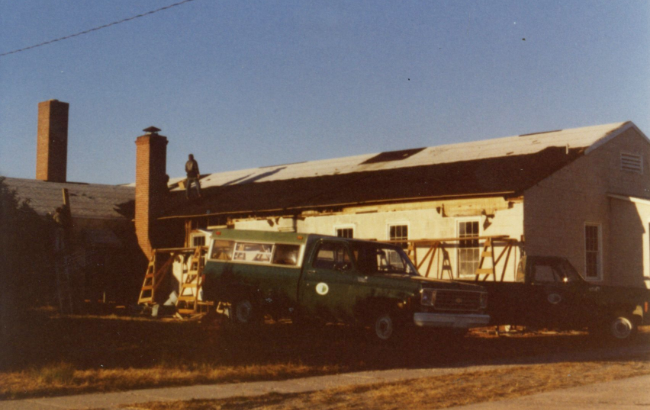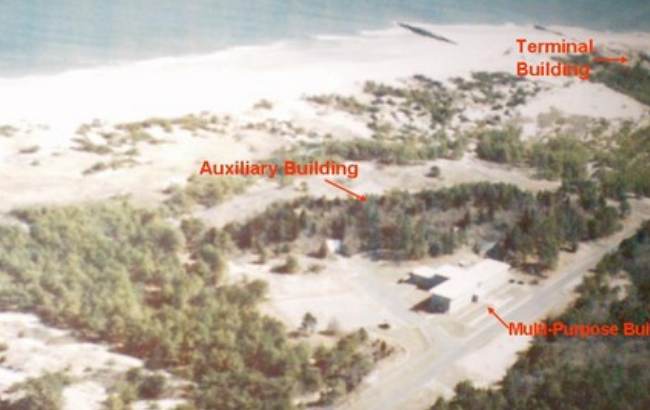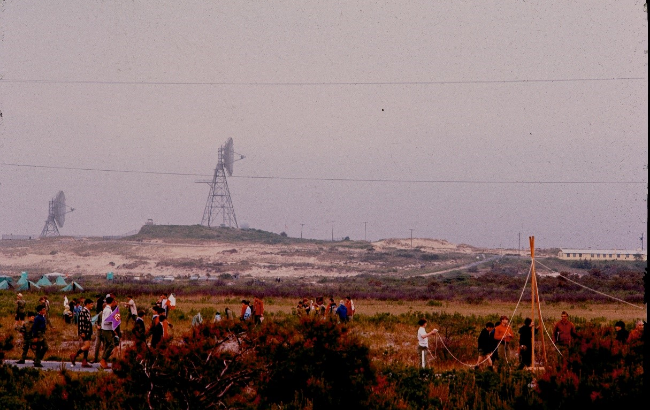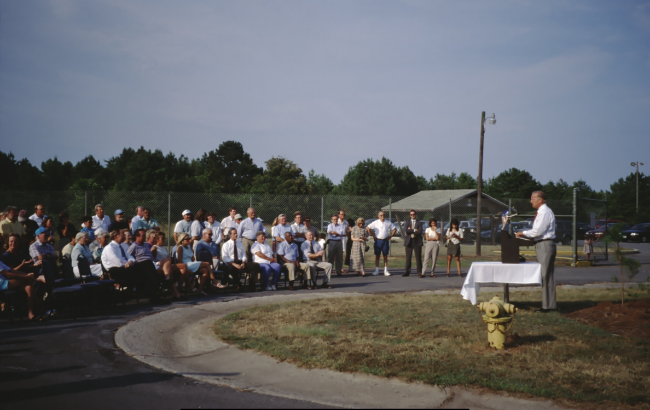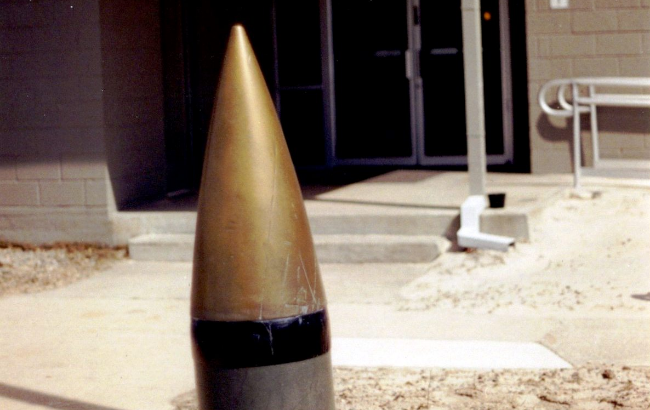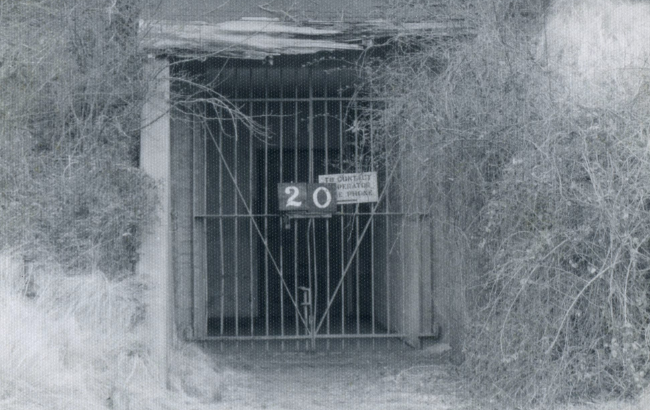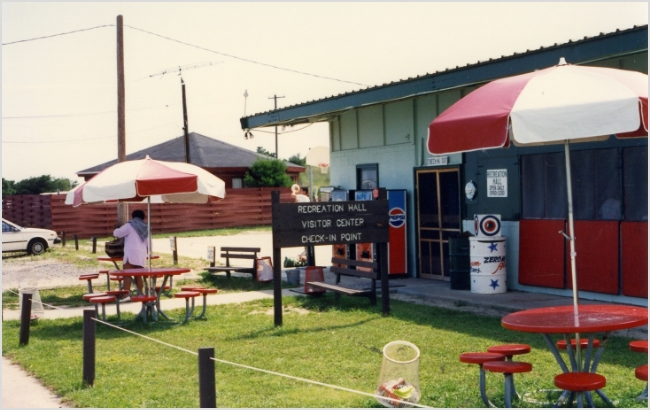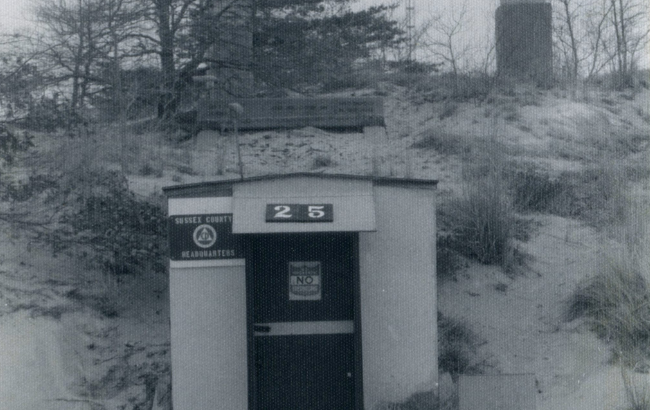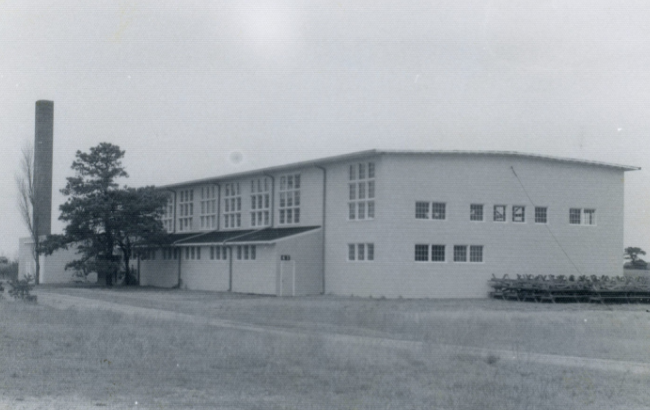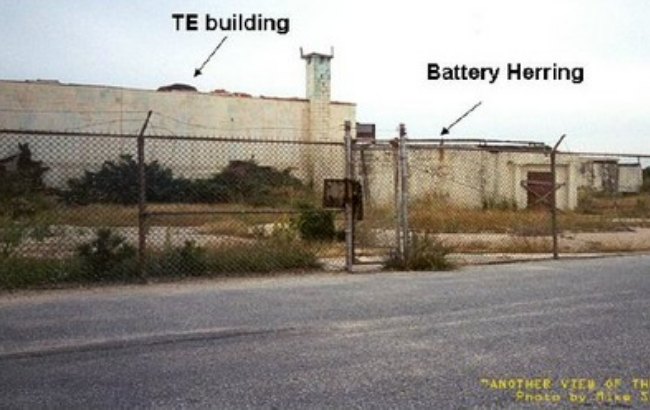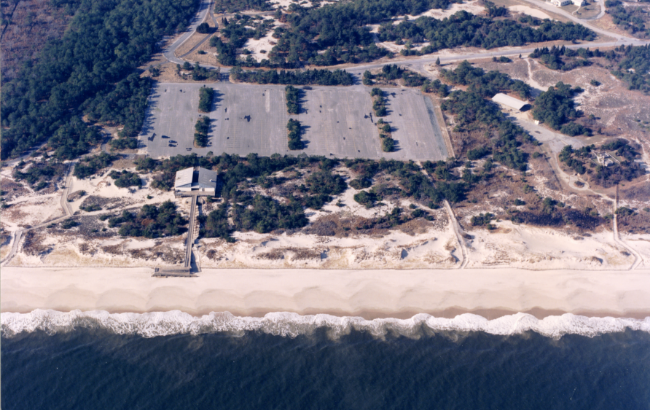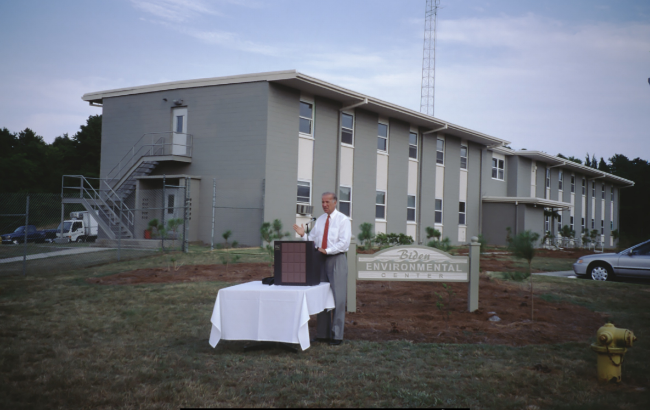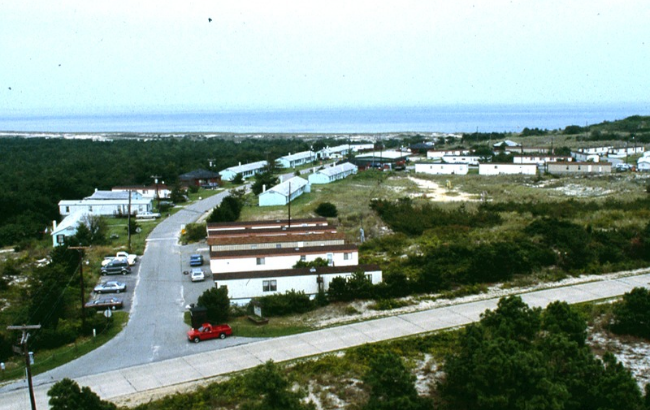Fort Miles Through the Years
From defending the homeland’s coast in WWII to covert operations during the Cold War, Fort Miles has played an important role in American history.
1910s, 1920s, and 1930s
Strategic Importance & World War I
The Delaware Bay has long been a vital location for the United States for its access to the Delaware River, and has been defended and fought over since colonial times. But before World War I, the Delaware River’s fortifications were obsolete and the Bay’s coastal defenses were lacking, despite the important Philadelphia Naval Shipyard and key manufacturing and refining operations in the region.
The start of World War I saw the development of a naval base at Cape Henlopen to support coastal vessels, such as sub chasers and minesweepers to defend against German U-Boats attacks along the approaches to Delaware Bay. Emergency 6-inch gun batteries were installed at both Cape May, NJ and at Cape Henlopen in case unauthorized shipping tried to enter the bay. These defenses were withdrawn after the end of World War I.
1940s
World War II
After Nazi Germany invaded Western Europe in 1940, U.S. defense planners intensified their efforts to build Delaware Bay’s coastal fortifications. In 1941, construction of two artillery batteries, Battery Smith (2-16-inch BC) and Battery 22 (4-155mm mobile) were begun, with Battery #519 (2-12-inches BC), Battery Herring (2-6-inches SBC), and Battery Hunter (2-6-inches SBC) undertaken in 1942. Eventually, Fort Miles would house nearly 2,500 soldiers and civilian personnel, cover more than 1,000 acres, and cost $22 million to build – worth $420 million in today’s dollars.
1950s
Transition from Coast Artillery to other Military Roles
Fort Miles entered a transition period away from its coast artillery role as in the late 1940s and 1950s. In March 1946 the harbor defenses of the Delaware Bay were inactivated and a small Army detachment remained as caretakers. The Army undertook the scrapping of the coast defenses at Fort Miles in 1948 and by 1949 its remaining harbor defenses responsibilities were transferred to the Navy. By 1950, the entire U.S. Coast Artillery Corp was disbanded as no foreign naval threats against the US were identified given the outcome of World War II and a strong desired by the government to reduce overall military fiscal expenditures.
1960s
The Cold War
As the Cold War deepened, former Fort Miles gain several new missions relating to homeland defense. The Army installed a Gap Filler Radar Station on FC Tower #12 which was then relocated to the former Battery #519. This radar station was part of the continental air defenses system (Nike Air-to-Ground Missiles). The Army continued to use the former Fort Miles for training, such as Operation Wet Horse II, an amphibious assault exercise designed to test the capability of reserve units to conduct large-scale landing operations which took place in May 1962.
1970s & 1980s
Cold War Phase-out
The development of satellite communications capabilities annulled the Navy’s requirements for troposcatter communications so in 1970 both the radio stations and naval ships supporting this system were decommissioned, including the radio station in the former Battery 519 and the station’s antennae were removed at Cape Henlopen.
1990s
Transition to a State Park is complete and the future Fort Miles Museum
More military controlled land was transferred to the state park when the Army ceased operation its MWR facility at Cape Henlopen altogether in 1991, as part of the Base Realignment and Closure Commission (BRAC) process. This area, consisting of approximately 96 acres around the beach and the cantonment area of the former Battery 519, was transferred to the State of Delaware.


